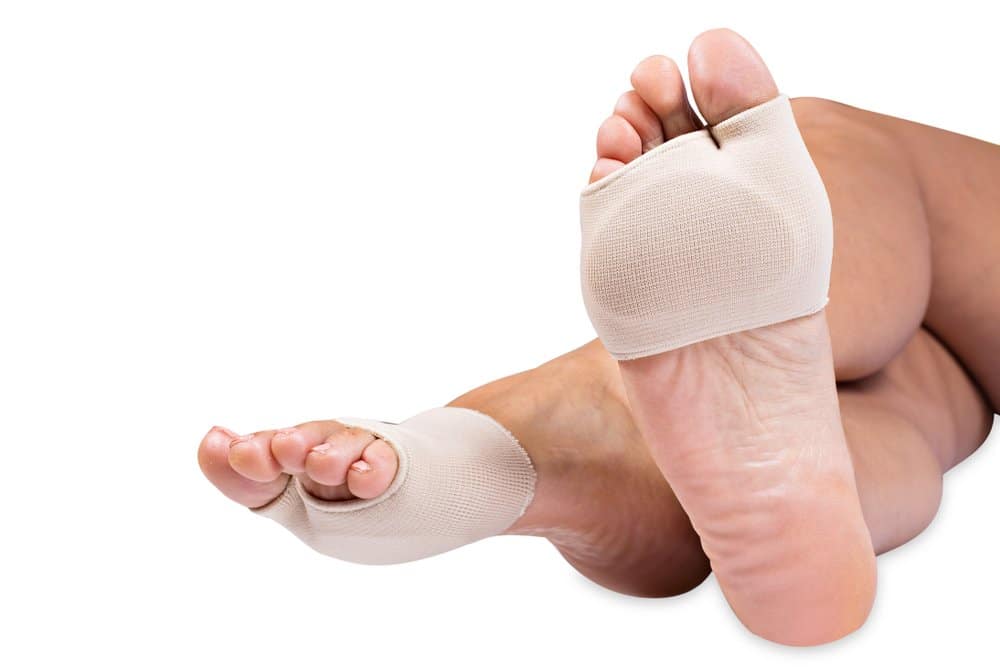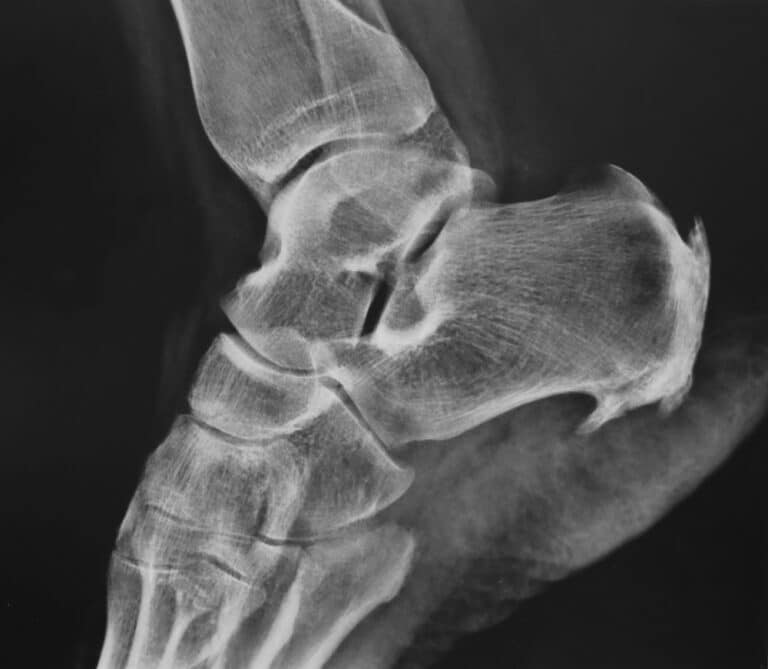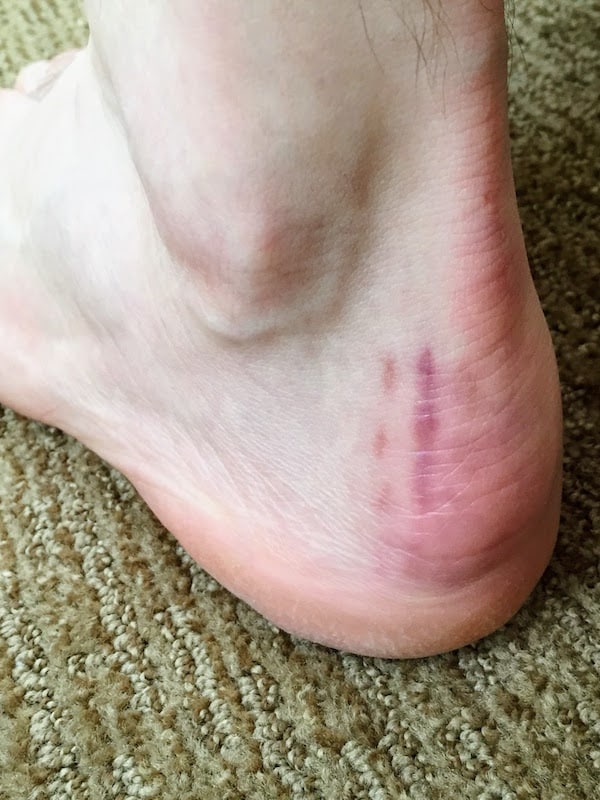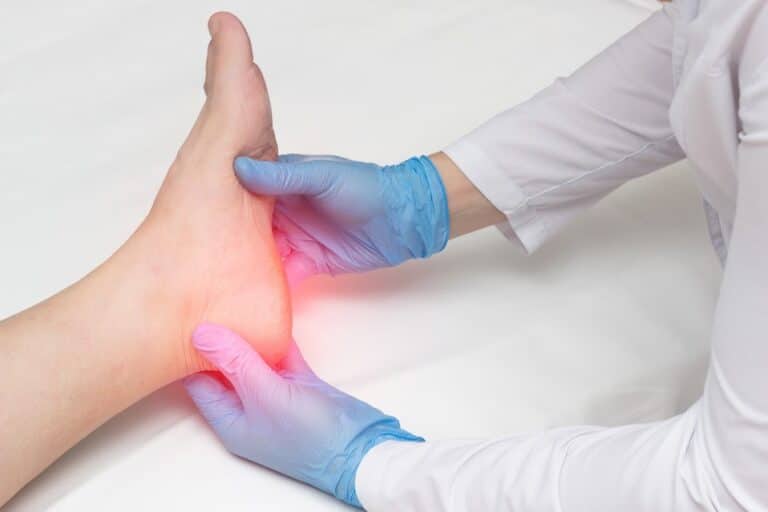The recovery time after 2nd metatarsal surgery can vary depending on several factors, including the specific procedure performed and individual healing abilities. When considering 2nd metatarsal surgery recovery time, it’s important to remember that each case is unique. However, here’s a general overview of the recovery timeline:
| Recovery Time After 2nd Metatarsal Surgery |
|---|
| Immediate Post-Surgery |
| – Keep weight off the affected foot and use crutches or a walker. |
| – Experience swelling, pain, and discomfort. |
| First Few Weeks |
| – Elevate the foot to reduce swelling. |
| – Wear a protective boot or cast for immobilization. |
| – Engage in physical therapy exercises and range-of-motion movements. |
| 4-6 Weeks |
| – Swelling and pain start to subside. |
| – Gradually begin weight-bearing activities and transition to supportive footwear or orthotics. |
| – Continue with physical therapy sessions. |
| 6-12 Weeks |
| – Increase weight-bearing activities and regain normal function. |
| – Intensify physical therapy exercises for strength and range of motion. |
| – Regularly attend follow-up appointments and communicate any concerns. |
| 3-6 Months |
| – Significant improvement in mobility and return to normal activities. |
| – Complete healing may take up to six months or longer. |
| – Follow healthcare provider’s instructions and engage in recommended rehabilitation activities. |
Please note that these timelines are general estimates and may vary based on individual circumstances and the specific surgical procedure.
Factors Affecting Recovery 2nd metatarsal surgery
Several factors can influence the recovery process after 2nd metatarsal surgery. Understanding these factors can help manage expectations and optimize the healing process. Here are some key factors that can affect recovery:
- Type of Surgery: The specific surgical procedure performed on the 2nd metatarsal can impact the recovery process. Different techniques and approaches may have varying levels of invasiveness and recovery timelines.
- Extent of Injury or Condition: The severity of the initial injury or condition being treated can influence the complexity of the surgery and subsequent recovery. More severe cases may require a longer recovery period.
- Individual Healing Ability: Each person’s body responds differently to surgery and the healing process. Factors such as age, overall health, and underlying medical conditions can affect the body’s ability to heal and recover.
- Adherence to Rehabilitation Protocols: Following post-operative instructions and engaging in rehabilitation protocols, including physical therapy exercises and range-of-motion activities, can greatly impact the recovery timeline. Compliance with these protocols is crucial for optimal healing.
- Lifestyle Factors: Lifestyle choices, such as smoking, poor nutrition, and inadequate rest, can negatively affect the recovery process. Maintaining a healthy lifestyle, including a balanced diet and sufficient rest, can support the body’s healing capabilities.
- Complications: In some cases, complications may arise during or after surgery, such as infection, poor wound healing, or delayed bone union. These complications can prolong the recovery time and require additional medical interventions.
- Patient Compliance: The patient’s willingness to follow post-operative care instructions, including weight-bearing restrictions, wound care, and attending follow-up appointments, can significantly impact the recovery process. Adhering to these guidelines is essential for successful healing.
It’s important to note that every individual’s recovery process is unique, and the above factors can interact differently in each case. Consulting with a healthcare professional who can evaluate your specific condition and provide personalized guidance is crucial for managing expectations and ensuring a smooth recovery after 2nd metatarsal surgery.

Steps and Expectations for a Successful Healing Process
Achieving a successful healing process after 2nd metatarsal surgery involves following specific steps and understanding what to expect during the recovery period. Here are the key steps and expectations for a successful healing process:
- Post-Surgery Care: Follow your healthcare provider’s instructions regarding post-surgery care. This may include keeping weight off the foot, using crutches or a walker, and wearing a protective boot or cast. Take prescribed medications as directed.
- Manage Swelling and Pain: Swelling and pain are common after surgery. Elevate your foot as much as possible to reduce swelling. Apply ice packs as recommended by your healthcare provider. Take pain medications as prescribed to manage discomfort.
- Wound Care: Proper wound care is crucial for preventing infection. Keep the surgical site clean and dry as per your healthcare provider’s instructions. Change dressings as directed and monitor for any signs of infection, such as increased redness, swelling, or drainage.
- Physical Therapy and Rehabilitation: Engage in physical therapy exercises and rehabilitation programs recommended by your healthcare provider. These exercises aim to improve strength, flexibility, and mobility. Follow the prescribed rehabilitation schedule and gradually increase activity levels as advised.
- Weight-Bearing Progression: Your healthcare provider will guide you on when to begin weight-bearing activities and how to gradually increase them. Initially, you may be advised to keep weight off the foot completely and gradually transition to partial weight-bearing and eventually full weight-bearing.
- Follow-up Appointments: Attend all scheduled follow-up appointments with your healthcare provider. They will monitor your progress, assess healing, and make any necessary adjustments to your treatment plan.
- Patience and Time: Healing takes time, and each individual’s recovery timeline may vary. Be patient and allow your body to heal at its own pace. Avoid rushing into activities or putting undue stress on the foot before it is fully healed.
- Open Communication: Communicate openly with your healthcare provider throughout the healing process. Report any concerns, unexpected symptoms, or changes in your condition. They can address your questions, provide guidance, and make any necessary adjustments to your treatment plan.
Remember, each person’s healing process is unique, and it’s important to follow the specific instructions and guidelines provided by your healthcare provider.
Strategies for a Smooth 2nd Metatarsal Surgery Recovery
A smooth recovery after 2nd metatarsal surgery requires careful planning and adherence to specific strategies. Here are some strategies to promote a smooth and successful recovery:
- Follow Postoperative Instructions: Strictly adhere to the postoperative instructions provided by your healthcare professional. This may include guidelines on wound care, medications, weight-bearing restrictions, and activity modifications. Following these instructions is crucial for optimal healing.
- Manage Pain and Discomfort: It is normal to experience some pain, swelling, and discomfort after surgery. Take prescribed pain medications as directed to manage pain effectively. Applying ice packs to the surgical area for short periods can also help reduce swelling.
- Rest and Elevate: Elevating your foot above heart level can help reduce swelling. Resting and avoiding excessive weight-bearing activities during the initial healing phase is essential for proper recovery. Follow your healthcare professional’s recommendations regarding weight-bearing restrictions and gradually increase activity levels as advised.
- Protect the Incision: Keep the surgical site clean and dry to prevent infection. Avoid soaking the foot in water until cleared by your healthcare professional. Follow their instructions for changing dressings, keeping the incision site covered, and avoiding activities that may cause trauma to the area.
- Wear Supportive Footwear: Use comfortable, supportive footwear recommended by your healthcare professional. This will provide stability, cushioning, and protect the foot during the healing process. Avoid tight-fitting or high-heeled shoes that may put pressure on the surgical site.
- Physical Therapy and Rehabilitation: Your healthcare professional may recommend physical therapy or specific exercises to improve strength, flexibility, and mobility. Engaging in prescribed rehabilitation exercises can help restore normal function and speed up the recovery process.
- Communicate with Your Healthcare Professional: If you experience any unexpected symptoms, increased pain, or concerns during your recovery, promptly communicate with your healthcare professional. They are best equipped to address your questions and provide necessary guidance.
- Be Patient: Every individual’s healing timeline is unique. It is important to be patient with the recovery process and not rush into activities or sports before you have fully healed. Follow-up appointments with your healthcare professional will allow them to monitor your progress and make appropriate recommendations.
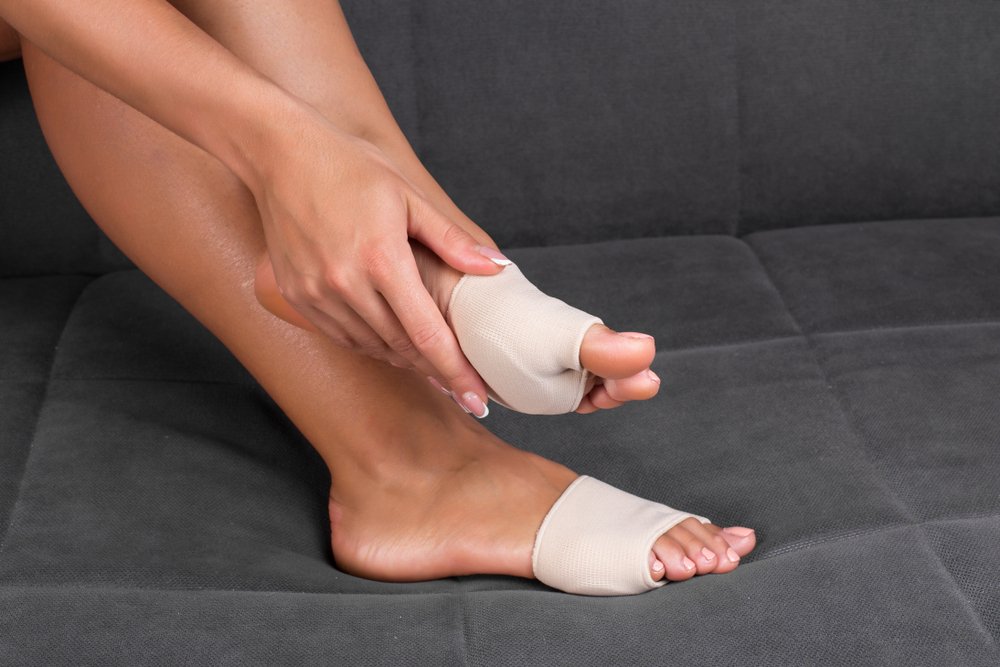
By implementing these strategies and working closely with your healthcare professional, you can promote a smooth and successful recovery after 2nd metatarsal surgery.
Physical Therapy and Rehabilitation: Enhancing Recovery and Restoring Function
Physical therapy and rehabilitation play a crucial role in enhancing recovery and restoring function after 2nd metatarsal surgery. These interventions are designed to optimize healing, improve strength and flexibility, and promote a successful return to normal activities. Here’s how physical therapy and rehabilitation can enhance your recovery process:
- Customized Treatment Plan: A skilled physical therapist will assess your condition and develop a personalized treatment plan based on your specific needs and goals.
- Pain and Swelling Management: Physical therapists employ various techniques to manage post-surgical pain and swelling. These may include manual therapy, ice or heat therapy, electrical stimulation, and ultrasound.
- Range of Motion and Flexibility: Physical therapy focuses on restoring joint mobility and flexibility. Therapists will guide you through gentle stretching exercises and range-of-motion activities that prevent stiffness and maintain or improve joint function.
- Strengthening Exercises: Gradually introducing strengthening exercises helps rebuild the muscles that support the foot and ankle. Therapists will prescribe exercises targeting the specific muscles involved in foot and ankle movements, gradually increasing resistance and difficulty over time.
- Balance and Proprioception Training: After surgery, regaining balance and proprioception (awareness of the body’s position in space) is important. Physical therapists use various exercises, such as standing on one leg or using balance boards, to improve stability and reduce the risk of falls.
- Gait Training: Therapists assist in relearning proper walking mechanics, ensuring that weight is distributed correctly and normal gait patterns are restored. This helps prevent compensation patterns and improves overall mobility.
- Functional Rehabilitation: Physical therapy also focuses on functional rehabilitation, helping you regain the ability to perform specific activities and tasks essential for daily life. This may include activities such as climbing stairs, getting in and out of a car, or returning to sports or recreational activities.
- Education and Home Exercise Program: Physical therapists provide education on proper body mechanics, footwear selection, and injury prevention strategies. They will also develop a tailored home exercise program to continue progress outside of therapy sessions.
By actively participating in physical therapy and rehabilitation, you can enhance your recovery, regain strength and mobility, and optimize functional outcomes after 2nd metatarsal surgery.
Assessing the Overall Success and Durability of 2nd Metatarsal Surgery
Assessing the overall success and durability of 2nd metatarsal surgery involves considering various factors and evaluating the outcomes of the procedure. Here are key aspects to consider:
- Pain Reduction: One of the primary goals of 2nd metatarsal surgery is to alleviate pain. Assess whether the surgery has successfully reduced or eliminated the pain associated with the condition.
- Improved Functionality: Evaluate whether the surgery has improved your ability to perform daily activities and engage in desired physical pursuits. Consider factors such as walking, running, standing, and participating in sports or recreational activities.
- Mobility and Range of Motion: Determine if the surgery has restored or improved the range of motion in your foot and ankle. Evaluate your ability to flex, extend, and rotate the foot without pain or restrictions. Consider whether you have regained normal joint mobility and flexibility.
- Long-Term Stability: Assess the stability of your foot and the durability of the surgical correction. Evaluate whether the surgery has provided long-term stability to the affected metatarsal and surrounding structures.
- Patient Satisfaction: Consider your overall satisfaction with the surgery and its outcomes. Assess whether your expectations were met, taking into account factors such as pain relief, functionality, and overall improvement in quality of life.
- Radiographic Evaluation: X-rays or other imaging studies can provide objective evidence of the surgical correction and help evaluate the long-term outcomes.
- Follow-Up Appointments: Regularly attending follow-up appointments with your healthcare provider is essential for evaluating the success and durability of the surgery.
It’s important to have open communication with your healthcare provider throughout the assessment process. They can provide valuable insights based on their expertise and experience.
What is 2nd Metatarsal Surgery? Exploring the Procedure and Its Benefits
2nd metatarsal surgery refers to a surgical procedure performed on the second metatarsal bone in the foot. The second metatarsal is located in the middle of the foot and connects to the base of the second toe. The surgery may be recommended to address various conditions or injuries affecting the second metatarsal, such as fractures, deformities, arthritis, or chronic pain.
The specific type of 2nd metatarsal surgery will depend on the underlying condition and its severity. Some common procedures include:
- Osteotomy: This involves cutting and repositioning the metatarsal bone to correct deformities or relieve pressure on surrounding structures. It may be done to address conditions like metatarsalgia or to correct alignment issues.
- Fixation: In cases of fractures or severe instability, surgical fixation may be necessary. This involves using screws, plates, or other devices to stabilize the bone and promote proper healing.
- Arthroplasty: This procedure involves removing or reshaping the damaged joint surfaces to alleviate pain and improve joint function. It is commonly performed for conditions like arthritis or joint degeneration.
- Joint Fusion: In cases where joint damage is severe, joint fusion may be recommended. This involves permanently fusing the affected joint, eliminating painful joint movement.
The benefits of 2nd metatarsal surgery can vary depending on the specific condition being treated. Some potential benefits include:
- Pain Relief: Surgery can alleviate chronic pain associated with conditions like metatarsalgia, fractures, or arthritis. By addressing the underlying cause, surgical intervention aims to reduce or eliminate pain, allowing for improved mobility and quality of life.
- Improved Functionality: Surgery can restore or enhance the functionality of the foot by correcting deformities, realigning bones, and improving joint movement. This can result in improved gait, balance, and overall foot function.
- Correction of Deformities: Certain conditions may cause deformities in the second metatarsal or nearby structures. Surgery can correct these deformities, improving foot appearance and reducing discomfort.
- Enhanced Joint Health: By addressing conditions like arthritis or joint degeneration, surgery can help preserve or improve joint health. This can slow down the progression of joint damage and provide long-term benefits.
- Return to Activities: For individuals limited by pain or functional impairment, 2nd metatarsal surgery can enable a return to activities they may have previously been unable to perform.
It’s important to note that the specific benefits and outcomes of 2nd metatarsal surgery will depend on individual factors, the underlying condition, and the surgical technique used.
References:
- Alberta Health Services. (n.d.). Aftercare Information – Conditions. Retrieved from https://myhealth.alberta.ca/Health/aftercareinformation/pages/conditions.aspx
